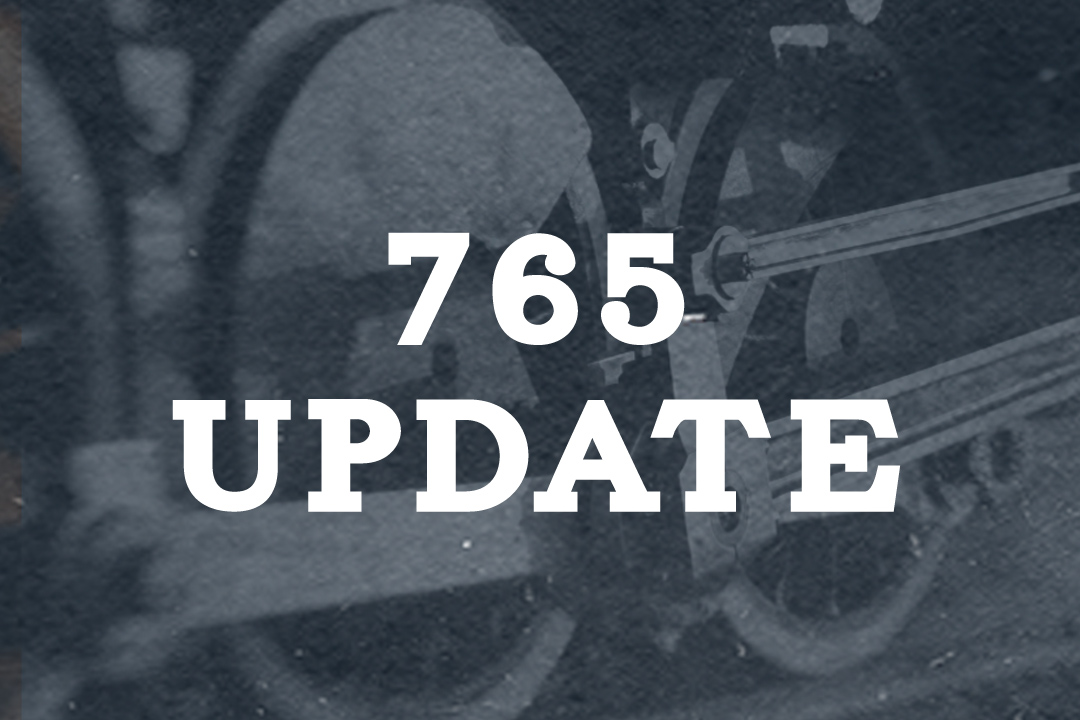Submitted by Steve Winicker.
LAST WEEKENDS SHOP ACTIVITY
Lots of insulation when on stand offs were made and a couple of jacketing pieces were cut out. One piece of jacketing is in place. Unfortunately, progress on the insulation was a bit under what was needed but progress none the less. Jerrad put stencils on the tender. The new yellow color with black lettering paint scheme is going to look great. D J got one of the support beams for the bottom of the caboose done and another on the road to completion. A variety of additional projects were looked at and completed. John Jaress worked on the whistle valve and may have its leaks fixed. We will know for sure when we put some pressure on it. Gary Bensman and Bob Gold were able to get the bonnet off the boiler stop valve on the right side of the engine. We will be doing some machining on that to make the valve work as it should.
UPCOMING ACTIVITIES
Insulation needs to be finished on the boiler and started on the engine cab interior next weekend. Bob continues to work on the jacket and will through at least part of next week at the shop. Jerrad is hoping to blacken up the tender on Tuesday afternoon. We need a crew to work on insulation on Friday, Saturday and probably Sunday. Other projects need attention as well. The plan is to replace our one broken staybolt as well.
SAFETY SENSE
Compressed air is often misjudged and not recognized as a hazard because people often think of air as harmless. CAUTION: SERIOUS INJURY MAY OCCUR!
Points to be aware of regarding compressed air…
- Air forced into body tissues through the skin can cause an air embolism (air bubbles in the blood stream) which can be fatal if it reaches the heart, lungs, or brain.
- Inflation injuries of the intestine can be caused by air being directed at private body areas. A worker in the U.K. died of injures sustained through horseplay with a compressed air hose. Any horseplay can be deadly!
- Air blown into the mouth at only 5 PSI can rupture the esophagus or the lungs.
- Eye and ear injuries can occur from a blast of air or flying particles. These types of eye and ear injures can cause partial or total loss of sight or hearing.
- The sound created from compressed air discharging from a hose can reach 120-130 dB, depending the system pressure, which is well above OSHA’s 90 dB permissible exposure limit.
- 40 PSI can blow out an ear drum from 4 inches away and possibly cause brain damage.
- As little as 12 PSI can blow an eye out of its socket!
- Flying particles can cause cuts and bruises to any part of the body.
Points to Remember….
- Hoses and lines must be rated to meet the maximum operating pressure of the equipment
- Always wear proper Personal Protective Equipment:
o Safety glasses with side shields and a face shield if needed
o Hearing protection
o Respiratory protection, depending on the material(s) being worked with
- Normal work clothing does not provide protection against compressed air
- If you must clean with compressed air, do not use air that is set above 30 PSI. You must also have effective chip guarding and proper PPE
- Compressed air should not be used to clean clothing or body parts such as hair
- NEVER POINT COMPRESSED AIR AT YOURSELF OR ANOTHER PERSON!
We use compressed air quite frequently if not daily. It is extremely useful but must be used properly, following all safety rules, in order to prevent injuries to ones self or others.


